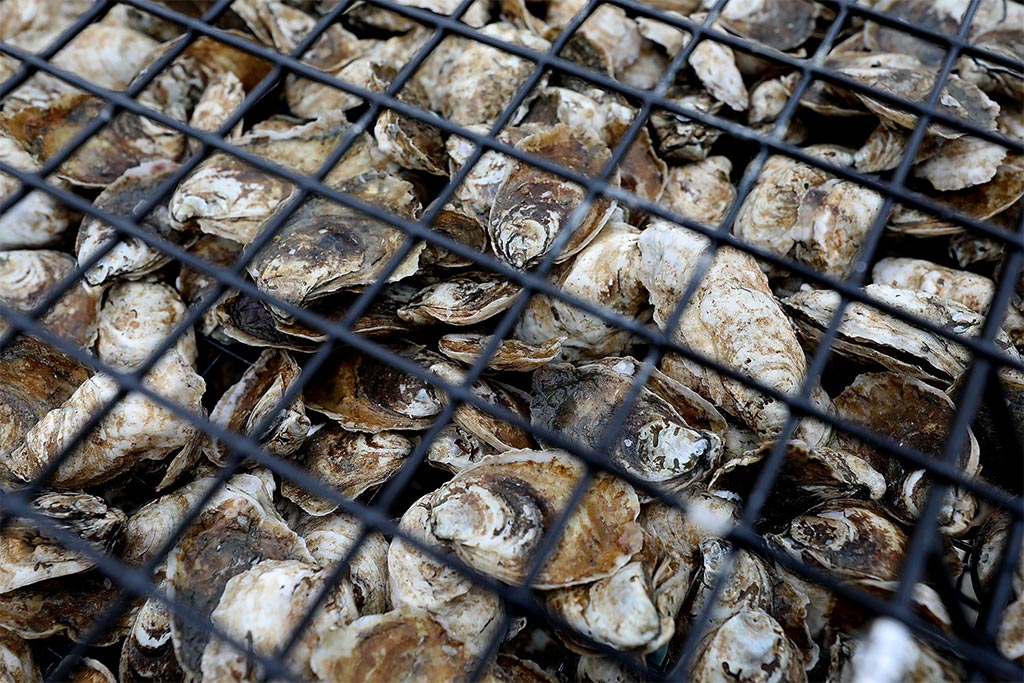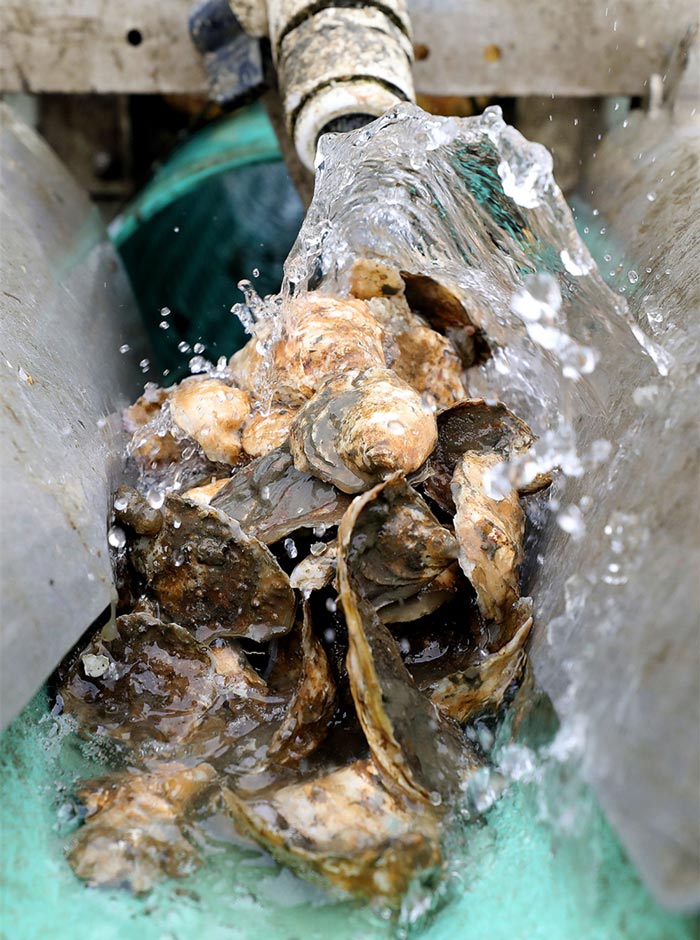Oysters are a staple of the sea. We dine on them, raw, steamed and fried, and their beautiful pearls are featured as statement pieces in our favorite jewelry. But, did you know they provide more than just delicious seafood and breathtaking gems?
The natural filter feeders pump water through their gills and trap pollutants to create cleaner, more improved waterways. An adult oyster can actually filter as much as 50 gallons of water a day.
Mike Manyak, owner of Sapidus Farms, shared his insight on the best way to recycle oysters.
The Maryland native, dubbed “Oyster Mike,” found his calling in muck boots by providing what he calls “Happy Oysters” to restaurants and retail consumers up and down the Chesapeake Bay. He practices a farm-to-table approach by engaging in environmentally-friendly practices that produce a plump “Happy” oyster.
His first tip for recycling is easy. Return the oyster shells to their natural habitat. Placing the shells back into the water can actually help oyster populations grow. The best place for an oyster to settle is on another oyster. When used shells go back into the water, they provide a space for the next generation of oysters to grow and thrive.


Old shells help build new ones, too. Mollusk shells are rich in calcium carbonate, which can repair damaged oyster reefs. Calcium is an important component to sea life that use it to help form their protective shells. By doing something as simple as tossing your shells back into the water, you put calcium back into the Bay helping shelled sea critters thrive.
If you’re not close to water, recycle those shells in other ways.
Virginia is home to various shell recycling programs. The Virginia Oyster Shell Recycling program collects oyster shells from more than 60 Virginia restaurants, 30 seafood retailers and the general public in support of oyster reef restoration.
The Chesapeake Bay’s Save Oyster Shellsprogram turns 2,000 bushels of recycled shells each year into habitat for millions of oysters planted in the Chesapeake Bay and its rivers. Drop off your used oyster shells at several locations in Hampton, Henrico County, Smithfield, Toano and Williamsburg. Click here to find all drop-off locations around the state.
Or use the shells in your garden. The calcium levels in them make for an ideal mulch for tomato plants and peppers. Just crush a handful of shells and add them directly to the soil. Water afterward.
If all this talk about used shells makes you hungry, feast on Sapidus Farms’ happy oysters that can be shipped to you or picked up at one of the farm’s several partner locations.
Above all, remember to give back to the oysters that gave to you.
